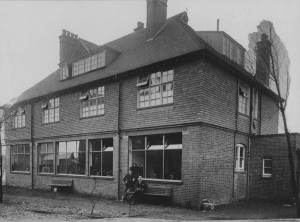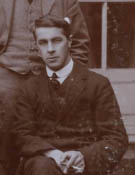For all the new students, we thought that it would be nice to meet the students from 100 years ago. In 1914, the School ran three sessions during the year; the 46th session began in October 1914 and ran to December. 23 students attended, this was made up of 19 men and 54 women.
The number of students was significantly reduced compared to previous years (71 for the Oct 1913 session) due to the outbreak of the First World War in August 1914. It is presumed that many potential students joined up rather than attended the School and the number of staff members was also reduced as they joined the Army. The School minute books record that ‘in every instance where an employee has been called away in connection with the war that his appointment be kept open and that if he is receiving from the Government less remuneration than that paid by this Society the difference shall be made up during the time he is absent from the Hospital’.
At this time the School was part of the Seamen’s Hospital Society and was based in the Albert Docks in the East End, along with the Hospital for Tropical Diseases. This was so students had access to seamen suffering from tropical diseases who had arrived back from overseas on their boats which docked in the Thames. The school offered facilities for study and research, including laboratories and insectaries that provided students with the opportunities to develop and share their knowledge. There was also an emphasis that students would not only learn how to identify and treat tropical disease but would also gain the skills to investigate illnesses.
The group photo above shows the students along with members of staff including H B Newham, the Director and Superintendent (front row, second from the left). He attended the School in 1906 as a student; then became a demonstrator until he became Director in 1910. Colonel Alcock (front row, fifth from left) was appointed as head of a new medical entomology department in 1907, in 1915 he was called up to serve for hospitals for Indian troops in England. Reginald Cockin (front row, first on right) was appointed Lieutenant in the Royal Army Medical Corps in 1915 and went on a School expedition with Robert Leiper and John Thomson (front row, first on left) to study bilharziasis in Egypt. Thomson went on to work on malaria in Alexandria with Sir Ronald Ross, and we have some of his correspondence in the Archives.
On leaving the School, the majority of students travelled overseas, their destinations are listed in the School register and are as follows: West Africa 4; Central Africa 1; South Africa 1; India 1; Ceylon 2: China 3: Japan 1; Malay States 1; West Indies 4; Central America 4; USA 1 and unknown 3. The School registers also record which service they were from: Colonial Service 10; Japanese Government 1; Missions 4 and private 8
If you would like to find out more about the history of the School or our archive collections visit our webpage here or email us at archives@lshtm.ac.uk







